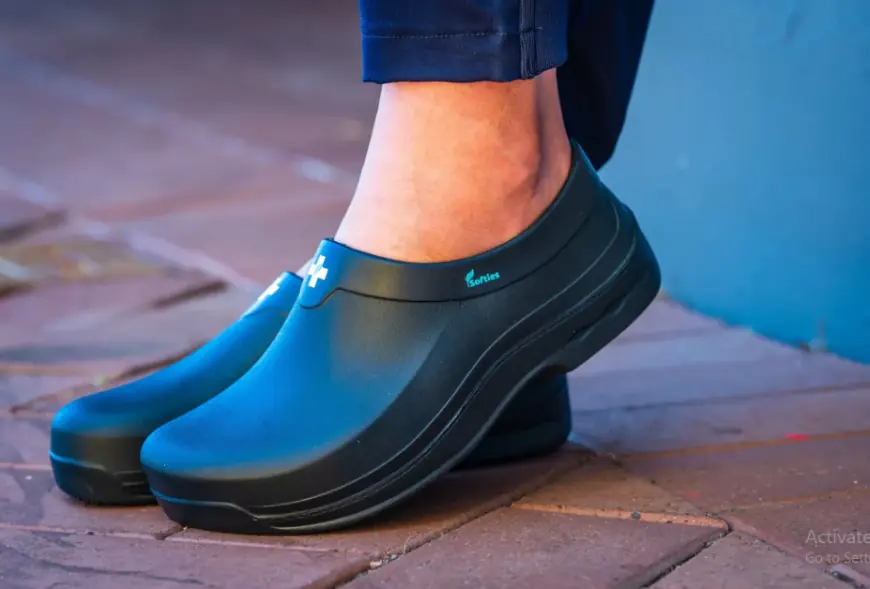Choosing The Right Insole For Maximum Comfort In Nurses' Shoes
Choosing a high-quality insole is not just about comfort; it is an investment in foot health that can prevent issues such as plantar fasciitis, bunions, and heel pain.

Nurses spend long hours on their feet, often working gruelling shifts that demand both stamina and comfort. Selecting the right nurses' shoes is essential for maintaining foot health and overall well-being during these demanding workdays. However, even the best shoes can benefit from a carefully chosen insole designed to provide additional support and cushioning. This article explores how to choose the right insole for maximum comfort in nurses' shoes, highlighting important features and considerations that can make a significant difference in daily comfort and performance.
Why Insoles Matter in Nurses' Shoes
The demanding nature of nursing means that feet endure constant pressure and impact, which can lead to fatigue, pain, and long-term foot problems. While nurses' shoes offer fundamental support and protection, the right insole adds an extra layer of cushioning and helps distribute weight more evenly. Insoles can improve shock absorption, reduce strain on joints, and provide arch support tailored to individual needs.
Choosing a high-quality insole is not just about comfort; it is an investment in foot health that can prevent issues such as plantar fasciitis, bunions, and heel pain.
Key Features to Look for in Insoles
When selecting insoles for nurses' shoes, consider several essential features:
-
Arch Support: Proper arch support helps maintain the foot’s natural alignment and reduces stress on the arch and heel. Nurses with flat feet or high arches should seek insoles specifically designed for their foot type.
-
Cushioning: Adequate cushioning absorbs shock with every step, reducing fatigue. Gel, foam, or memory foam insoles provide varying levels of comfort, so it’s important to choose based on personal preference and foot sensitivity.
-
Breathability: Nurses often work long shifts in enclosed environments, which can cause feet to sweat. Insoles made from breathable materials help keep feet dry and reduce odour.
-
Durability: Frequent use means insoles must withstand significant wear and tear. Look for insoles made from high-quality materials that retain their shape and cushioning over time.
-
Fit and Thickness: Insoles should fit comfortably inside nurses' shoes without causing tightness. Thicker insoles offer more cushioning but may reduce shoe space, so balance is key.
Types of Insoles Suitable for Nurses' Shoes
Several types of insoles cater to different needs:
-
Orthotic Insoles: Designed for those with specific foot conditions, orthotic insoles provide targeted support and alignment correction. They are often recommended by podiatrists.
-
Gel Insoles: Offering excellent shock absorption, gel insoles reduce pressure on heels and balls of the feet. They are popular among nurses for their cushioning properties.
-
Memory Foam Insoles: These conform to the foot’s shape, providing customised comfort. Memory foam is soft and supportive, ideal for nurses seeking personalised cushioning.
-
Foam Insoles: Lightweight and breathable, foam insoles provide moderate support and are a budget-friendly option for many.
How to Choose the Right Insole for Your Nurses' Shoes
Choosing the right insole depends on individual foot structure, existing foot problems, and work demands. Here are some steps to help guide the selection process:
-
Assess Your Feet: Consider arch type, any pain areas, and foot shape. This can be done through self-assessment or consulting a specialist.
-
Evaluate Your Current Shoes: Not all nurses' shoes have removable insoles. Ensure the shoes you wear can accommodate an insole without causing discomfort or fit issues.
-
Try Before You Buy: Whenever possible, test different insoles to find the best fit. Many retailers offer trial periods or satisfaction guarantees.
-
Consider Your Work Environment: For nurses working in humid conditions, breathable insoles may be more important, while those on hard floors might prioritise cushioning.
-
Seek Professional Advice: If you have chronic foot pain or conditions, consult a podiatrist to get recommendations tailored to your needs.
Additional Considerations for Nurses’ Work Attire
While the focus is on footwear, it’s important to remember that overall comfort at work includes other clothing choices. For example, a well-fitted work skirt can complement your uniform by offering ease of movement and breathability, which contributes to overall comfort during long shifts.
Choosing the right insoles and comfortable attire together creates a comprehensive approach to managing the physical demands of nursing.
Maintenance and Replacement of Insoles
Insoles require regular maintenance to remain effective. Wash or air them out frequently to prevent odour and bacteria buildup. Over time, even the best insoles lose cushioning and support. It is recommended to replace them every six to twelve months, depending on wear and usage.
Monitoring the condition of your insoles helps maintain foot comfort and prevents injury.
Conclusion
Investing in the right insoles for nurses' shoes significantly enhances comfort, support, and foot health during long work hours. By considering factors like arch support, cushioning, breathability, and fit, nurses can find insoles that alleviate fatigue and prevent common foot problems. Complementing footwear with comfortable work attire, such as a work skirt, ensures mobility and ease throughout demanding shifts. Prioritising these elements supports overall well-being, allowing nurses to focus on their vital work with confidence and comfort.
What's Your Reaction?
 Like
0
Like
0
 Dislike
0
Dislike
0
 Love
0
Love
0
 Funny
0
Funny
0
 Angry
0
Angry
0
 Sad
0
Sad
0
 Wow
0
Wow
0



















































